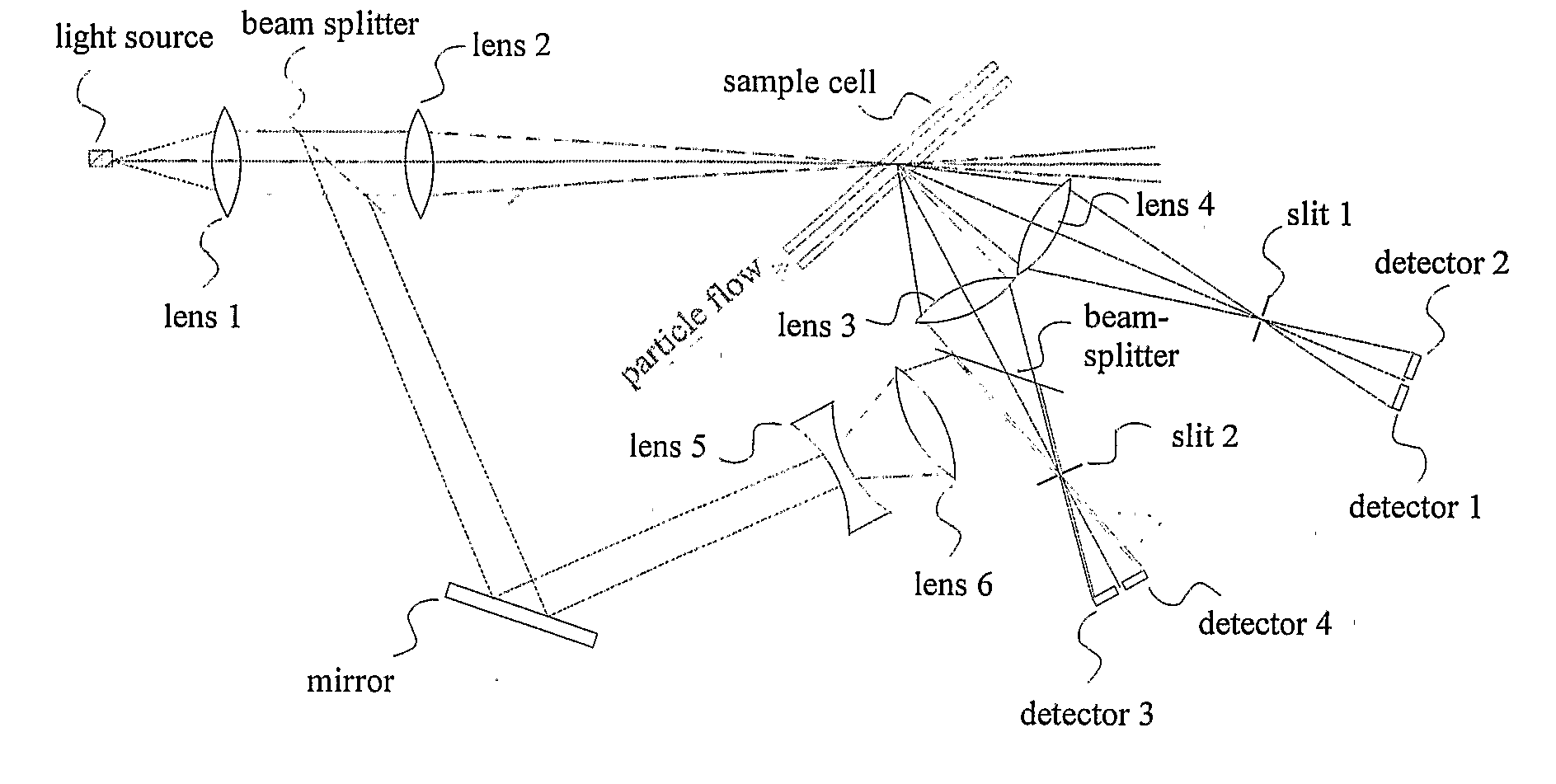Methods and apparatus for determining the size and shape of particles
a particle size and shape technology, applied in particle and sedimentation analysis, measurement devices, instruments, etc., can solve the problem of limiting the size dynamic range of a single measurement, and achieve the effect of reducing statistical count uncertainty and improving the dynamic range of coun
- Summary
- Abstract
- Description
- Claims
- Application Information
AI Technical Summary
Problems solved by technology
Method used
Image
Examples
Embodiment Construction
[0004] Light scattered from the large diameter beam should be measured at low scattering angles to sense large particles. The optical pathlength of this beam in the particle sample must be large enough to pass the largest particle of interest for that beam. For small particles, the interaction volume in the beam must be reduced along all three spatial directions. The beam crossection is reduced by an aperture or by focusing the beam into the interaction volume. The interaction volume is the intersection of the incident light beam and the field of view for the detector which measures scattered light from the particle. However, for very small particles, reduction of the optical path along the beam propagation direction is limited by the gap thickness through which the sample must flow. This could be accomplished by using a cell with various pathlengths or a cell with a wedge shaped window spacing (see FIG. 9b) to provide a range of optical pathlengths. Smaller source beams would pass ...
PUM
| Property | Measurement | Unit |
|---|---|---|
| particle diameter | aaaaa | aaaaa |
| particle diameter | aaaaa | aaaaa |
| refractive index | aaaaa | aaaaa |
Abstract
Description
Claims
Application Information
 Login to View More
Login to View More - R&D
- Intellectual Property
- Life Sciences
- Materials
- Tech Scout
- Unparalleled Data Quality
- Higher Quality Content
- 60% Fewer Hallucinations
Browse by: Latest US Patents, China's latest patents, Technical Efficacy Thesaurus, Application Domain, Technology Topic, Popular Technical Reports.
© 2025 PatSnap. All rights reserved.Legal|Privacy policy|Modern Slavery Act Transparency Statement|Sitemap|About US| Contact US: help@patsnap.com



